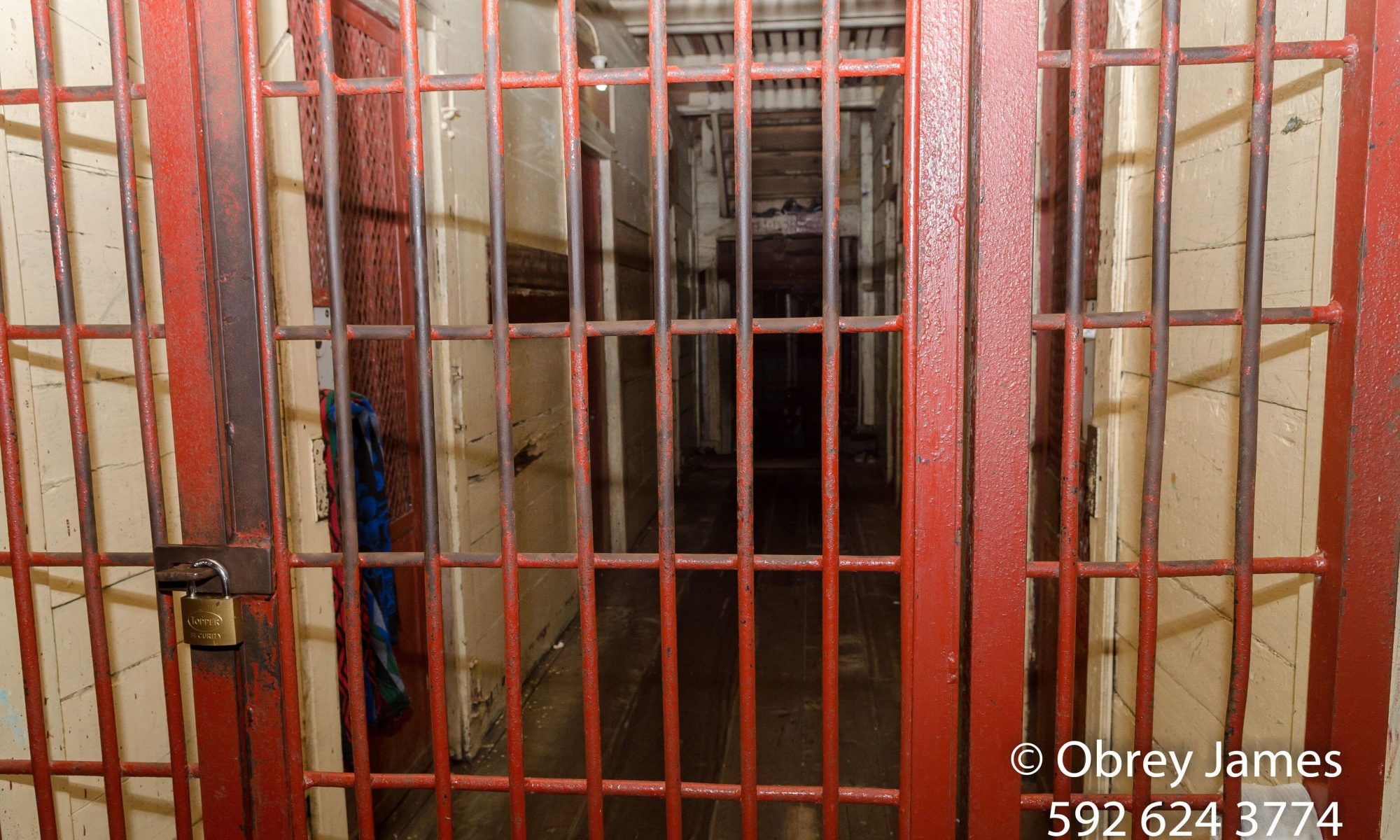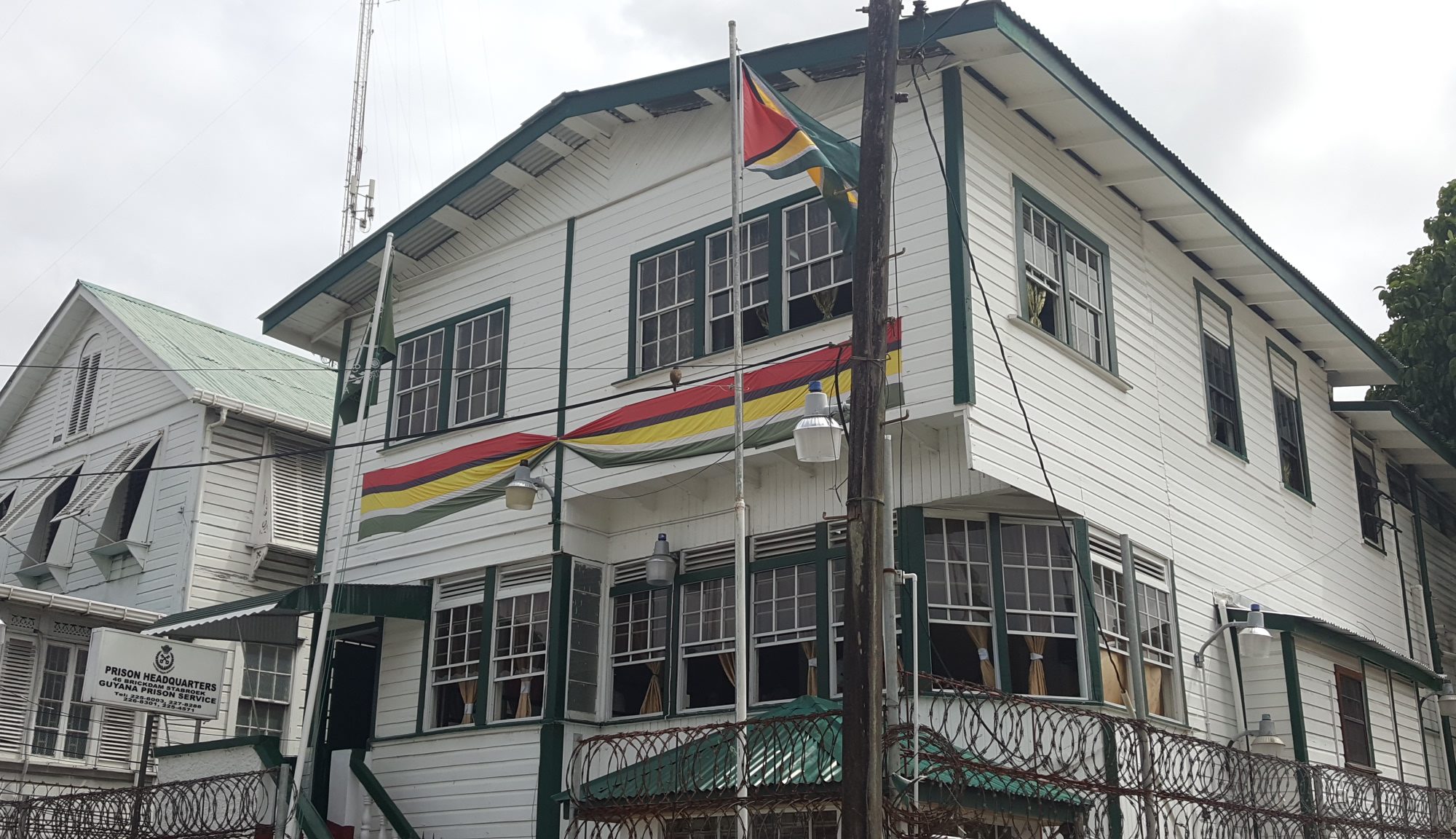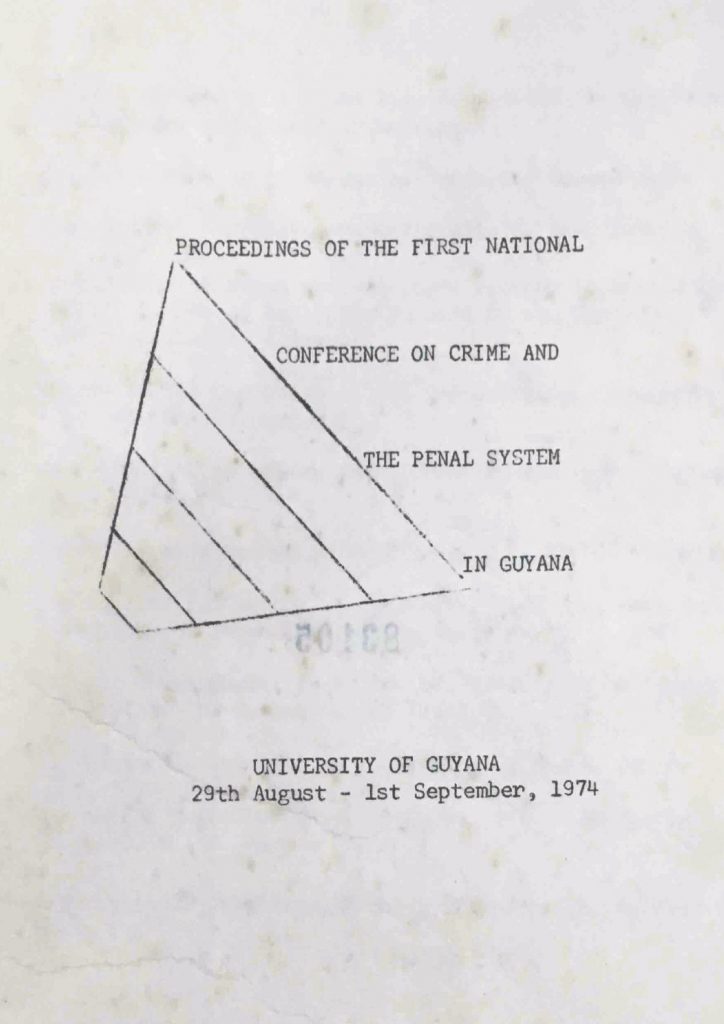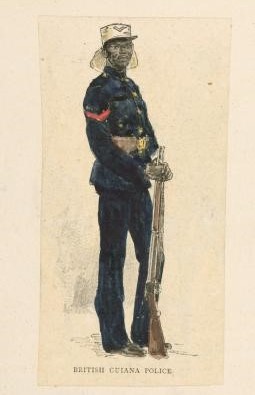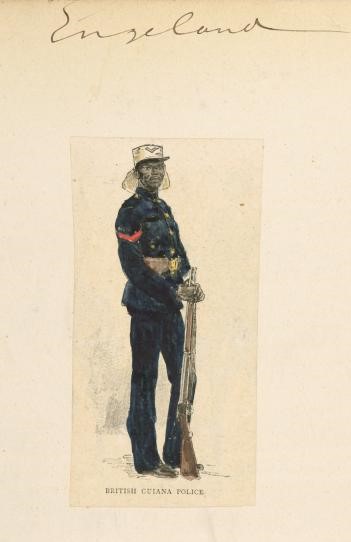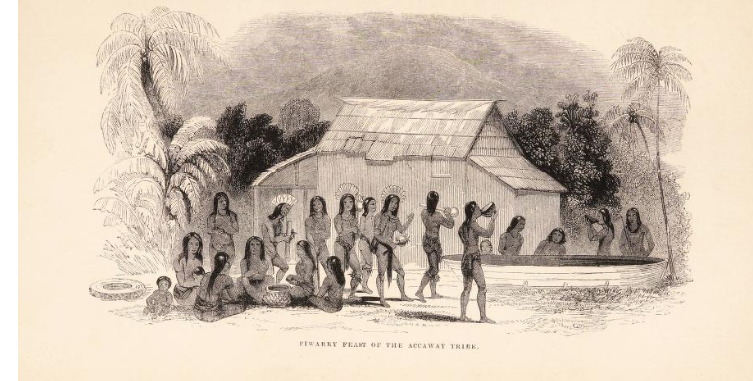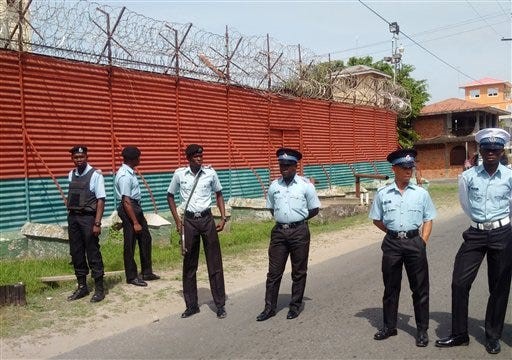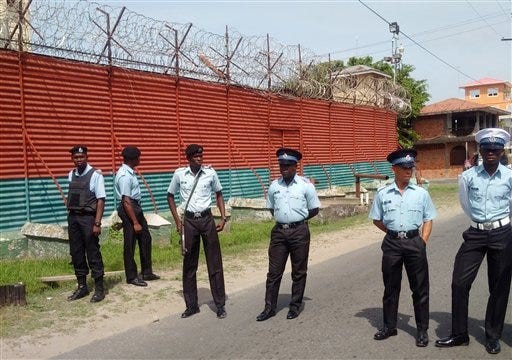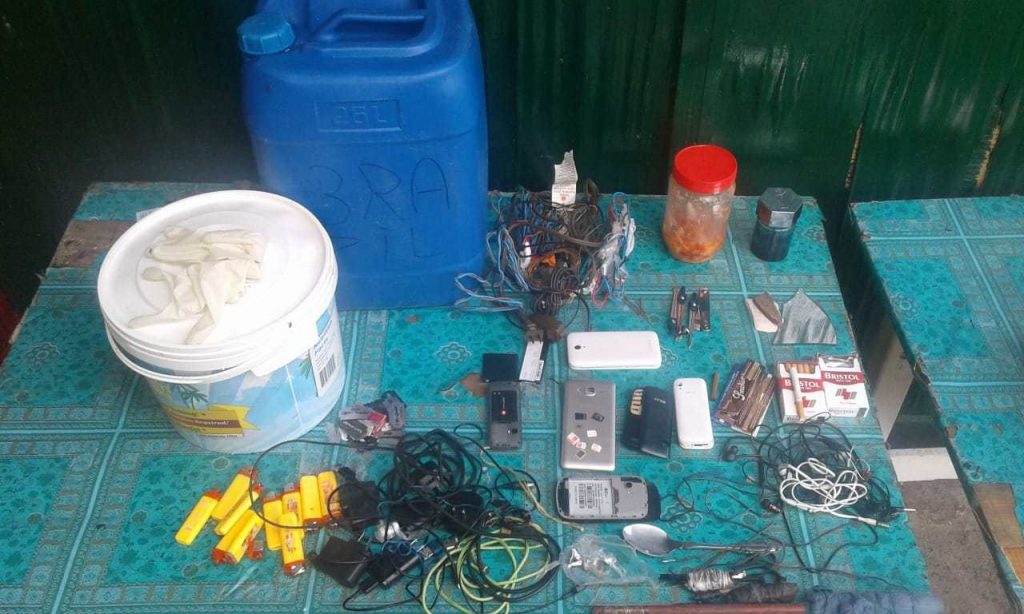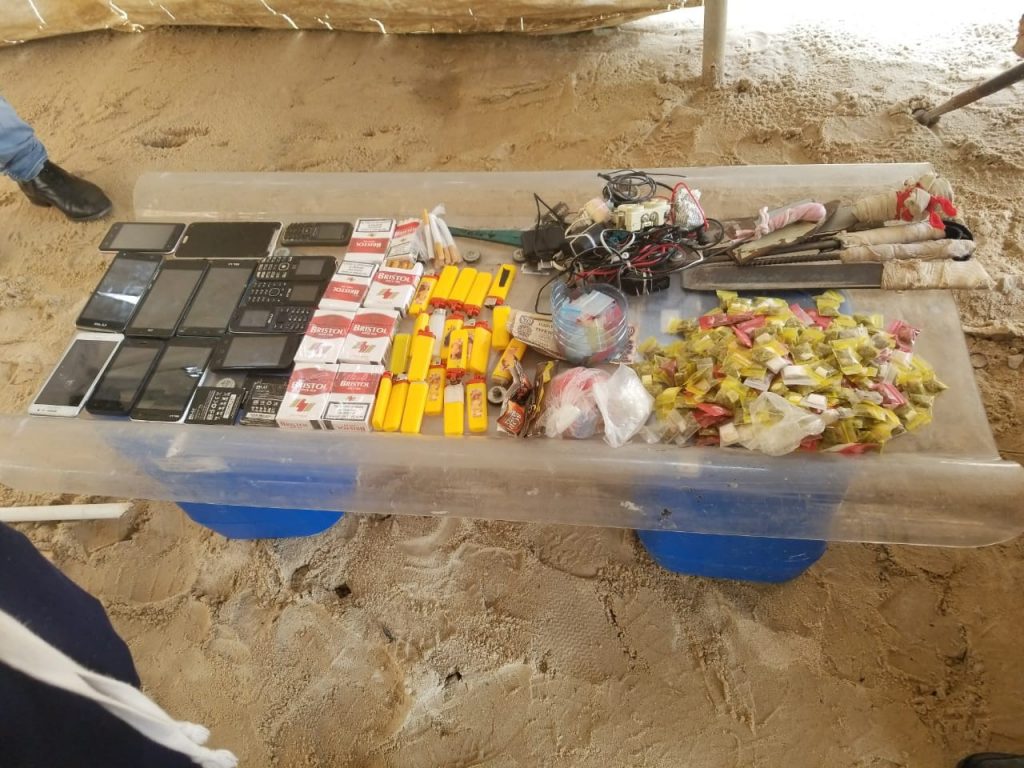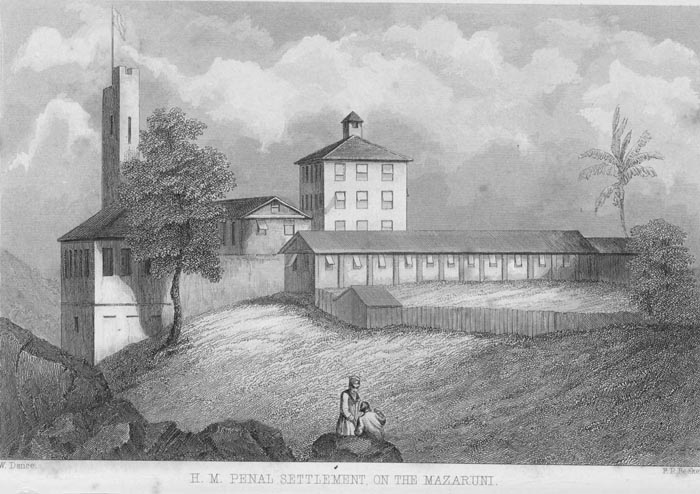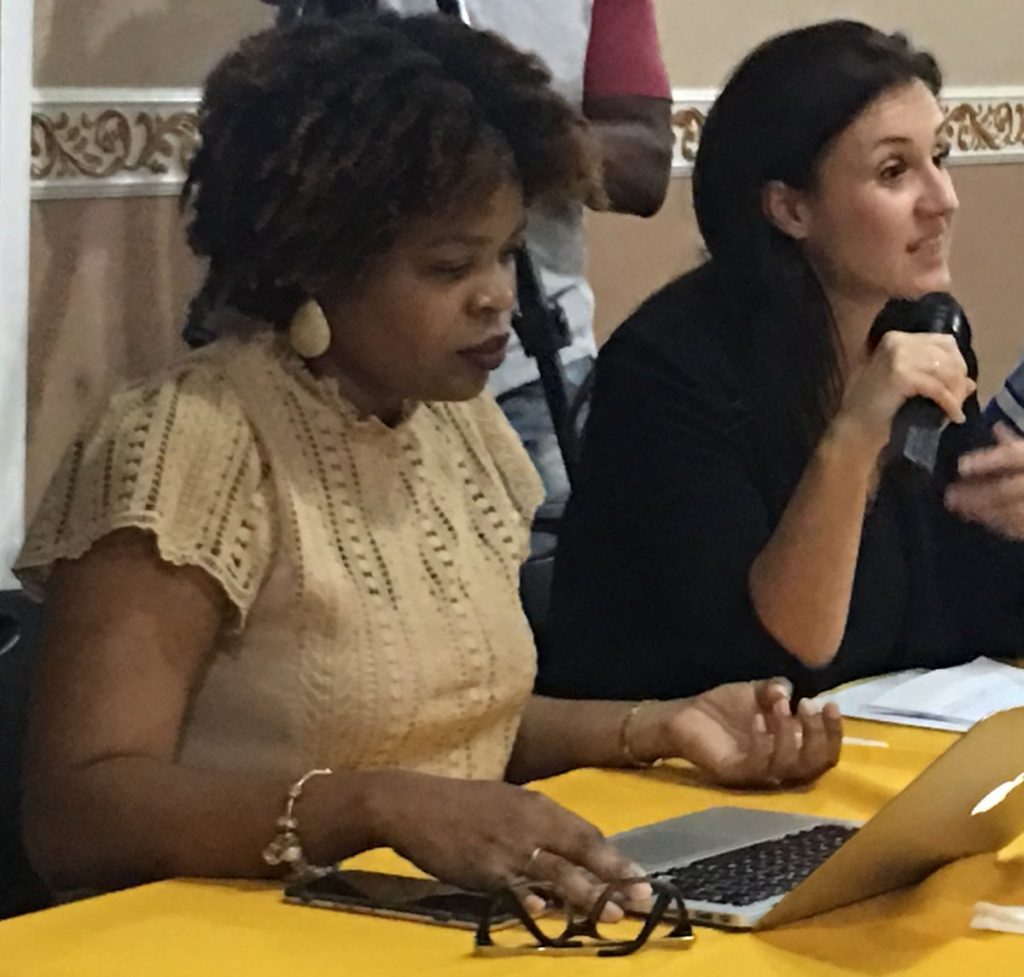Queenela Cameron
I never had cause to visit a prison. In fact, my only experience with the penal system was through visits to a nearby police station to take a meal for, or to offer support to a friend or relative detained for some minor infraction which did not require lengthy incarceration.
This situation changed for me when I became involved as Research Assistant on a University of Leicester-University of Guyana research project titled “MNS disorders in Guyana’s jails, 1825 to the present day,” which seeks to determine the definition, extent, experience and treatment of mental, neurological and substance abuse (MNS) disorders in Guyana’s jails: both among inmates and the people who work with them.
This blog offers a glimpse of my journey into prison research and the impact of this journey on my own personal awareness of the problems of incarceration.
A UK-based colleague with Trinidadian roots, Dr. Dylan Kerrigan and I were tasked with conducting interviews with prisoners housed at the Georgetown (Camp Street) and the Lusignan Prisons, in which a number of themes were explored including area/s of residency prior to incarceration, family life, education, childhood experiences, employment, reason for incarceration, experiences in prison life, hope for the future and so on. Twenty such interviews were conducted between the two prisons and included respondents that were clinically diagnosed with a MNS disorder and others who were not.
Prison security is “tight.” Once the reason for your visit is ascertained and accepted, everyone is then searched for prohibited substances and articles. I observed, how diligently and professionally the officers carried out this function. I recall observing a staff attached to an external janitorial company being refused further access to the facility after he refused to have his footwear searched. We were also required to lodge our handbag and backpack along with their contents (cell phones, money etc.) at the security hut; only writing materials, a voice recorder and other requisite paperwork were we allowed to take to the interviews.
Lusignan Prison was built after independence, on the grounds and land of a former plantation hospital that today is also a current landfill and rubbish dump. The prison compound is however well-kept. One of the prisoners interviewed took credit for the well put-together flower garden located at the front of the prison. Most of the buildings are wooden structures; old and dilapidated and in dire need of repairs if not complete demolition.
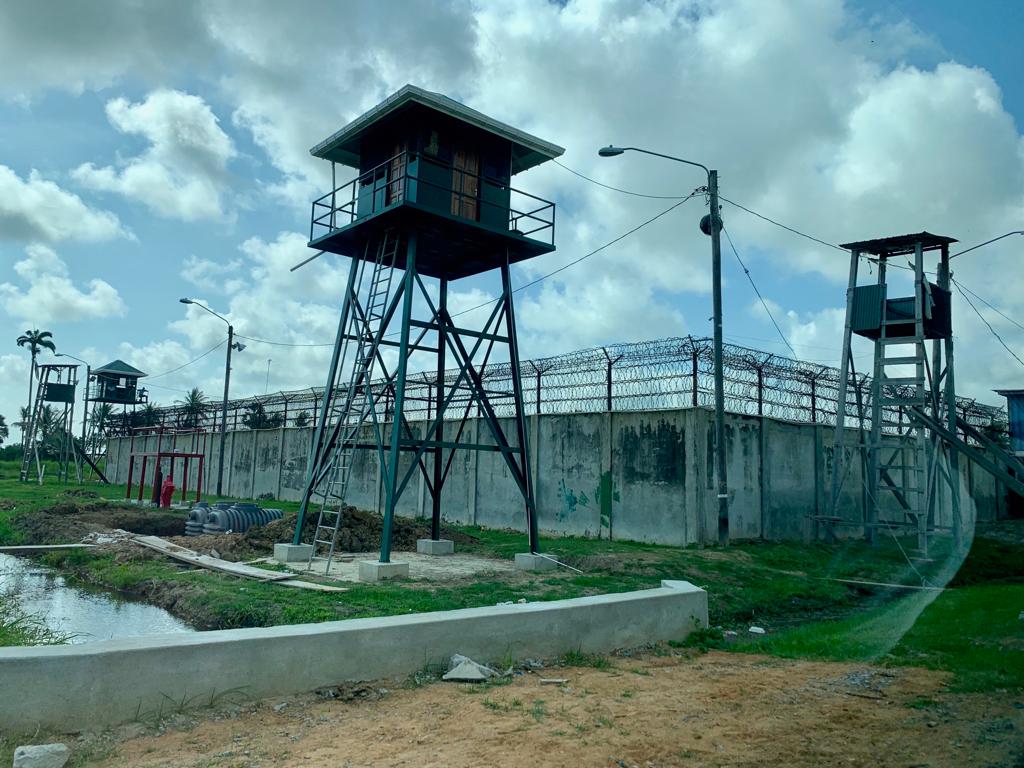
One of the things that struck me on my first day at the Lusignan Prison was its tranquility. There was a hum, but it was heard only when you actually focused on it. I think I was expecting that a facility in which hundreds of men are housed to be noisier; with chatter or laughter, or arguments. Prisoners in the prison yard also moved about quietly and purposefully and were always polite to us.
By day three, word must have gotten around about the nature of our research. On our way to the Chapel they (prisoners) would call out to us, some would request to be interviewed, some perhaps just happy to see two different faces which were becoming familiar to them.
The prison Welfare Officer was the personnel at Lusignan who organized and supervised our interviews with the prisoners. She was professional and courteous, and also happened to be a former student of mine. She would escort us to the Chapel which is almost always occupied with prisoners who had just concluded church services. The worshippers were always eager to assist with setting up the seating arrangements to our satisfaction and comfort.
Most of the prisoners, except for perhaps one, volunteered to be interviewed. We sought to understand the history and background of the prisoners; specifically, information which related to their early life; family, neighbourhood, education and employment. We also sought to ascertain the reason for their detention/incarceration, how they cope with prison life, their history of substance use and/or abuse both outside of and in prison, their mental health, views of themselves and society and their plans after release. The data obtained from the interviews was in some ways predictable, but it was also surprising, intriguing, shocking, and encouraging to me as a free individual.
Predictably, most of the prisoners interviewed were Afro Guyanese and followed sharply by Indo Guyanese. Mixed-race respondents followed and there was a tiny percentage that was indigenous Guyanese. The majority came from economically and socially depressed communities in Georgetown. There was also one Indigenous respondent who hailed all the way from Lethem, Region 9.
In addition to their community of origin, many of the prisoners came from families of predominantly single-parent households with absent fathers in most instances, and many siblings. In several cases, children were raised by grandparents and or other relatives when parents were either working away from home, or in the event of death of the parents, or due to their parents’ inability to provide for them. Additionally, most of those interviewed were school drop-outs, some at the primary and others at the secondary level. Many never wrote or got the chance to write the Caribbean Examination Council (CXC) examinations and thus lacked the basic requirements for clerical employment and higher education. Many sought unskilled work in areas such as in construction, others became mini bus conductors and peddlers in order to assist the family. Some started selling and/or using drugs; predominantly marijuana, while some got into trouble with the law after getting involved in crimes such as robbery; theft of phones, handbags break-and-enter etc. These socio-economic findings are regarded as “predictable” because the literature is replete with similar findings in the context of developed as well as developing countries.
Despite these, there was at least one prisoner who grew up in a financially well-off nuclear family in an economically vibrant community and is highly educated in the medical field. There was also one who studied at an overseas university for a while before quitting and one who is an educated sports umpire.
The vast majority of prisoners we spoke with were at the time on remand and were awaiting trial. The reasons for prisoners’ incarceration were many, but the charges of murder, manslaughter and assault stood out. A few of the murders were allegedly committed while drunk or high on narcotics, and a similar pattern was observed with the assault-related offenses. One (educated) prisoner decried the fact that he was sentenced for physically assaulting his wife while drunk. For him, it was a personal issue, and should have been dealt with in the domain of the home. (I still hope that the shock I felt at that position did not register on my face.) Most felt that being a man meant that they were the dominant partner in relationships (of marriage and the family) and see their role as that of providers. Being a man means acting like a man; tough and masculine. These positions are historical legacies of colonialism with respect to hierarchy, masculinity, gender and gender roles, and remain largely intact even today, both in and out of prison in Guyana.
A small number of prisoners were detained for drug-related offenses and some for robbery and theft. Many (especially murder accused) decried the lengthy time it took for their cases to be heard, and said they were receiving little information regarding their case. The Welfare Officer said that such information is always provided to prisoners.
Life in prison is boring for the vast majority of prisoners. Most argue that they don’t do much per day, passing the time reading (the Bible especially), sleeping or interacting with fellow cell or dorm mates. Some work in the kitchen preparing meals, others in the store, in the prison garden, or on the prison farm, others clean the grounds. At scheduled times, batches of prisoners are allowed to play sports in the prison yard. Cricket is one such games played at Lusignan. The prisoner with umpiring experience told us with pride and happiness, that he umpired some cricket matches which helped to lift his spirit. We also noticed some prisoners exercising in a very basic gym located on the ground floor a few feet away from the Chapel, while others played dominoes. Some prisoners are able to work for wages, outside of prison mostly in the area of construction or on farms. Employment provides them with the opportunity to assist their families financially, and also to provide themselves with additional sanitary and other supplies.
The majority of prisoners we interviewed are highly religious; predominantly Evangelical Christians, and attend church services frequently to pass the time. One respondent said he practices Hinduism on the outside, but would attend church services at times to help him cope with the stress of prison. Islam is also practiced at the Lusignan Prisons, and a separate space is provided for this purpose. Religion thus appeared to be one of if not the best coping mechanisms utilized by most prisoners. Almost every interviewed prisoner said that they are trusting God for his favour in terms of early trial, early release, light sentencing or even dismissal of their case. Even those against whom evidence seems stacked high remain optimistic that God will see them through. Apart from being an excellent coping mechanism, religious practice carries incentives to prisoners as attending religious services coupled with good behaviour aid in sentence commutation which translates to early release. Prisoners are not the only ones who lean on religion to cope. Some prison staff whom we spoke with informally also relied heavily on religion to help them deal with the pressures of work in the prison setting. One prison staff remarked that she talks to, and relies on her Jesus for strength in times of stress as there is no institutional mental health support for staff.
For most prisoners interviewed, cigarettes and marijuana have also been regarded as excellent items which aid in making life easier for prisoners. As a matter of fact, many said that they used either or both substances prior to incarceration. Prisoners including orderlies said that these two items have a calming effect on prisoners as they tend to sleep or lie quietly in their cell after using said items. This makes the job easier especially for prison officers as conflicts amongst prisoners (which require greater supervision) are drastically reduced. I suspect that this is perhaps one reason why prison officers turn a blind eye to marijuana smuggling and cigarette and use in prison although marijuana is an illegal and prohibited drug.
Most prisoners said that they have never witnessed the presence, or use of crack or cocaine in prison. It is almost the same for alcohol, although media coverage highlighted this in the past. A few of the prisoners interviewed were alcohol users or perhaps abusers prior to incarceration. In fact, some are in prison because of violent inter-personal crimes committed while intoxicated. Though alcohol is not popular in prison, there have been instances of prisoners making home-made or prison-made wine called “kushung peng,” also a prohibited substance. This wine is made from the skin of fruits and vegetables which are soaked for approximately two weeks. One Prison Officer in an informal conversation noted that the making of this wine is prohibited especially because of its effect (temporary) on the behavior of some prisoners. Some of the prisoners’ exhibit violent behavior towards other prisoners, some become psychotic; claiming to see spirits or hear voices, while some become loud and disruptive. These behaviours make the work of prison officials more challenging.
Some of the prisoners (approximately half) interviewed were clinically diagnosed with a mental health condition. These conditions include depression, psychosis, schizophrenia, multiple personality disorder, stress, compulsive lying and anxiety. One claimed to be a lion, and roared a few times for us. Another said he laughs out loudly at times, and because of this, persons seem to think that he is crazy. Some prisoners bang their heads against the cell walls while others almost never speak to anyone. At least one prisoner reported that one of his deceased parents had mental health condition, a trait he might have inherited. All of the prisoners interviewed complained of feeling depressed regularly. There was one prisoner that exhibited symptoms of multiple personality disorder who claimed to have been physically abused by his father for displaying “girly” (feminine) behavior and entered a life of petty crime to prove his masculinity. This trauma perhaps contributed largely to his illness and might be responsible for his incarceration.
Most of the clinically diagnosed prisoners are housed in the “Chalet” (a space in prison dedicated to inmates with mental health condition/s) of the prison. All of these prisoners are patients of Guyana’s renowned psychiatrist Dr. Bhiro Harry who makes frequent scheduled visits to the Chalet. Tables are given to some inmates, while injections are administered to others. Some complain that the medications (especially the injection) have a negative effective on them, causing them to drool and feel lethargic. Others complain that the tablets make them sleep a lot. There was one inmate who praised Dr. Harry for finding the correct medication and dosage for his many mental health conditions, and plan to continue in the doctor’s clinic when released. Of note is the fact that some of the diagnosed prisoners denied having a mental health condition. This could be attributed to the historical and continuing stigma attached to mental illness in Guyana, ignorance, or perhaps shame.
Some of these prisoners claimed to have experienced para normal activities in prison. Some said they have seen evil spirits and heard footsteps that turn out to be no one. One prisoner said that he was constantly tormented by a renowned ghost at the Mazaruni Prison. He said he begged to be transferred because of this, but continued to have the same experience at the Lusignan facility. Others claimed to have had sexual encounters with the beautiful spirits in their dreams who leave them “hanging.” There was one prisoner who suffers from epilepsy, and thinks that his condition could be helped if he gets to visit Suriname for “spiritual” healing because for him, his condition is not medical/neurological.
A small percentage of the prisoners said that they participated in the Anger Management Program. This program appears to combine religious teachings in its curriculum/application and is lauded by those who participated in it as a good initiative which aids in self-control.
Most of Guyana’s prisons seem to be overcrowded. This was exacerbated by the 2017 fire at the Georgetown Prison which destroyed several buildings including dormitories and cells, and resulted in the transfer of hundreds of prisoners to Lusignan. Some prisoners are therefore forced to live in cramped cells, at times having to share a single-mattress with another cell mate. One prisoner bemoaned the fact that some are forced to sleep in very close proximity to the toilet facility which is both unhealthy and inhumane. Concerns were also expressed about the lack of privacy one has when answering to calls of nature or taking a shower as the bathroom stalls are not equipped with doors or curtains. Food complaints were few, though at least one prisoner complained of needing larger portions.
Most prisoners regard many of the Prison Officers as “alright” or good people who don’t mistreat them. Violence towards prisoners by Prison Officers appear to be rare, and is utilized against prisoners who are extremely disruptive or violent towards each other. Similarly, the prisoners noted that there are not much prisoner to prisoner violence in the prison itself. Many of the news stories of violence and death at the Lusignan facility tend to take place in the holding bay; a make-shift facility erected at the back of the compound to house prisoners on remand.
For some prisoners, more televisions along with sports channels would make prison life a bit more bearable. The need to greater access to marijuana and cigarette to a lesser extent, seem to be the biggest desire for prisoners’ comfort. Marijuana is an illegal substance in Guyana which carries a maximum sentence of three years in prison. Despite this, most prisoners made it clear that they shall not stop its use in or out of prison.
Many miss their families and long to be reunited with them. For some, their relationship with family (especially their spouses) has suffered as a result of their prolonged detention. Some expressed their gratitude for the visits and material support offered by family members, a few lamented the lack of care and compassion given the absence of visits or any other form of support from family members, while at least one prefers that his family members not visit him at the facility in the interest of their safety.
Many prisoners seem optimistic that they’d be released from prison soon. Most place their faith and trust in God realize this dream even when the evidence seems stacked against them. While most claim to be innocent of all charges, there were a few who admitted culpability for their actions and pledged to lead a more productive and law-abiding post-prison life.
Life outside of prison might prove challenging for a few prisoners who claimed to be homeless with relatives unable but more so unwilling to house them, even temporarily. At least one prisoner expressed the need for temporary housing for former prisoners until they get back on their feet.
The position of one man accused of murder whom I recognized form being on the news, and who claimed to not recall the reason for his incarceration intrigued me. He said he does not wish to be released from prison; that he prefers to remain incarcerated. We tried to determine why this was so, but he refused to provide us with a response. I think that the combination of shame for his actions and fear of retribution by the family and community of his victim have made prison a safer place for him.
We sought some advice from prisoners before we concluded most of our interviews with them. The resounding advice revolved around the need for us to stay out of trouble to avoid incarceration; an advice well received.
The experience with prison interviews and prisoners have left lasting impressions on me as a free individual. I have a new-found respect for the capacity of humans to be resilient in the face of insurmountable challenges. Being confined in a small space with complete strangers for a prolonged period of time is enough to send one over the edge, but most prisoners cope; they remain optimistic about their future thanks largely to another colonial legacy – Christianity. The simple things that bring them happiness; marijuana and cigarettes, are things sometimes frowned upon by free peoples or may be prohibited by law. Policy makers need to revisit such laws, for I am convinced that prohibition or incarceration will not stop marijuana use.
The value of freedom is ever present in my consciousness and I often find myself utilizing the experience I’ve gained and the lessons I’ve learned during those prison interviews to caution as well as counsel many young men in my community. I trust that my words of counsel bear fruit.
Queenela Cameron is a research associate on the ESRC GCRF project Mental Health, Neurological and Substance Abuse Disorders in Guyana’s Jails, 1825 to the present day. She is also a lecturer in the Faculty of Social Sciences at the University of Guyana.

